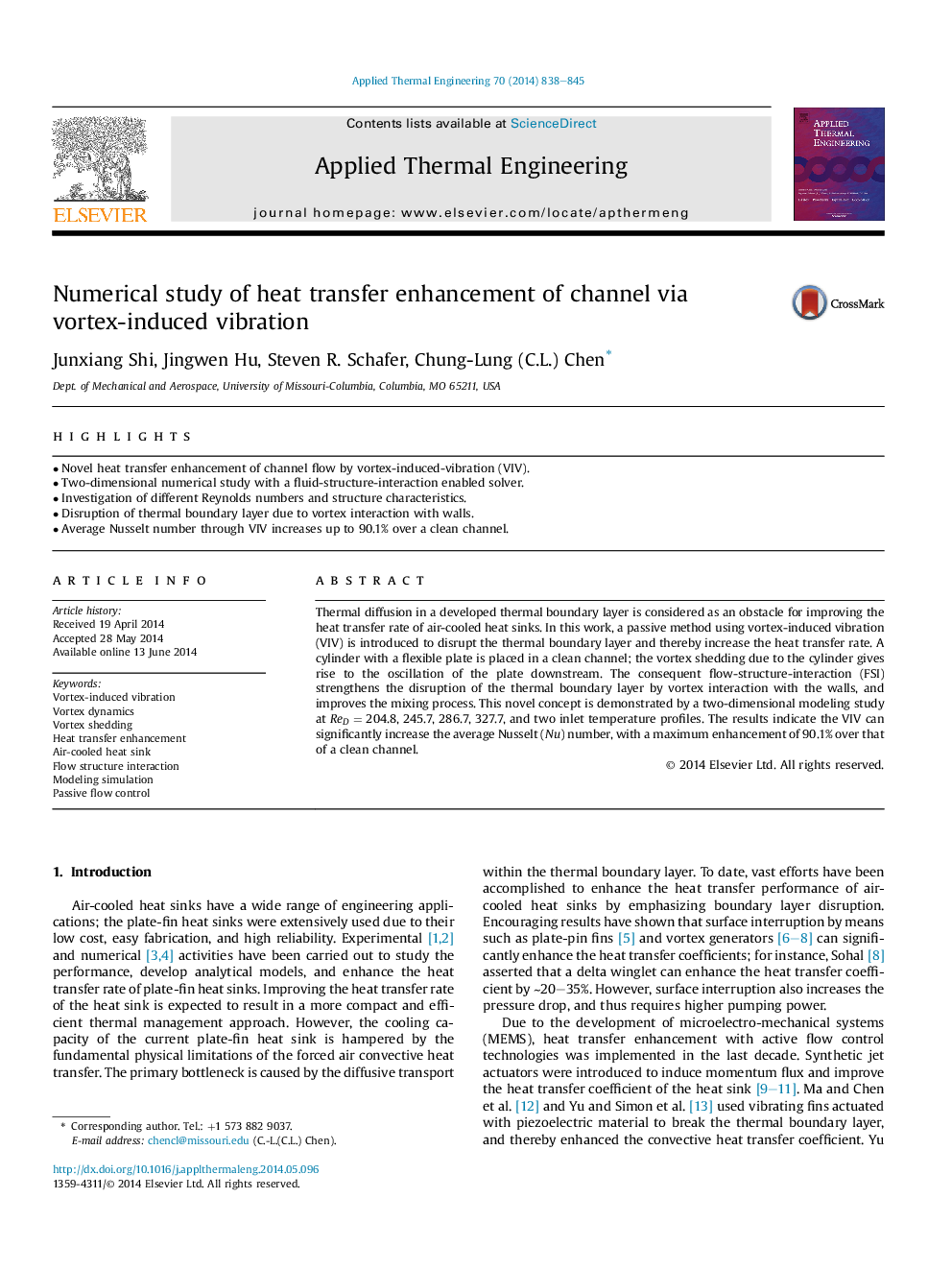| Article ID | Journal | Published Year | Pages | File Type |
|---|---|---|---|---|
| 646330 | Applied Thermal Engineering | 2014 | 8 Pages |
Abstract
Thermal diffusion in a developed thermal boundary layer is considered as an obstacle for improving the heat transfer rate of air-cooled heat sinks. In this work, a passive method using vortex-induced vibration (VIV) is introduced to disrupt the thermal boundary layer and thereby increase the heat transfer rate. A cylinder with a flexible plate is placed in a clean channel; the vortex shedding due to the cylinder gives rise to the oscillation of the plate downstream. The consequent flow-structure-interaction (FSI) strengthens the disruption of the thermal boundary layer by vortex interaction with the walls, and improves the mixing process. This novel concept is demonstrated by a two-dimensional modeling study at ReDÂ =Â 204.8, 245.7, 286.7, 327.7, and two inlet temperature profiles. The results indicate the VIV can significantly increase the average Nusselt (Nu) number, with a maximum enhancement of 90.1% over that of a clean channel.
Keywords
Related Topics
Physical Sciences and Engineering
Chemical Engineering
Fluid Flow and Transfer Processes
Authors
Junxiang Shi, Jingwen Hu, Steven R. Schafer, Chung-Lung (C.L.) Chen,
